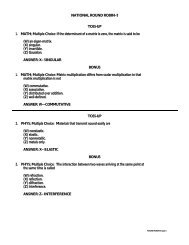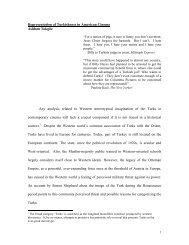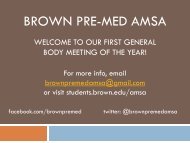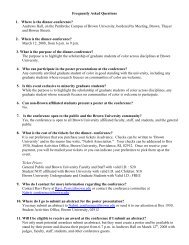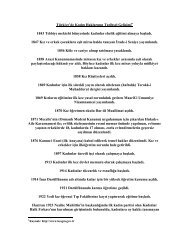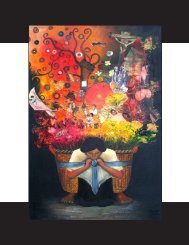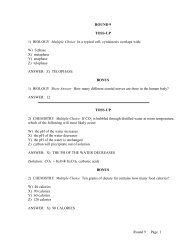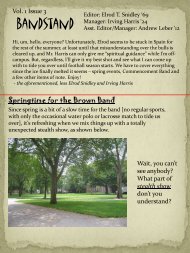Download as a .pdf file - Brown University
Download as a .pdf file - Brown University
Download as a .pdf file - Brown University
You also want an ePaper? Increase the reach of your titles
YUMPU automatically turns print PDFs into web optimized ePapers that Google loves.
ZIGGURAT<br />
of arable land <strong>as</strong> Xhosa land holdings diminished and the population<br />
became more crowded. This meant that women had to work incre<strong>as</strong>ingly<br />
harder on incre<strong>as</strong>ingly less available and less fertile land—making it likely<br />
that women would welcome the suggestion that there w<strong>as</strong> help on the<br />
way. Although initially suggesting that the Cattle-Killing movement “cut<br />
right across the spectrum of divergent interests in Xhosa society,” Peires<br />
ultimately recognizes that it w<strong>as</strong> women who “seem overwhelmingly to<br />
have supported the believers.” 26 It is not insignificant that it w<strong>as</strong> largely<br />
women who followed Nongqawuse’s teachings. As women gave up<br />
laboring in the fields, the loss of grain dramatically reduced food supplies.<br />
Many scholars consider this to be the most substantial factor leading<br />
to the following m<strong>as</strong>s starvation, which led to 40,000 Xhosa deaths. 27<br />
Understanding the appeal of Nongqawuse’s prophecies to women is<br />
crucial to understanding their effects—the cessation of female labor in<br />
the fields, far more so than the slaughter of cattle, is largely responsible<br />
for the dev<strong>as</strong>tation to the Xhosa population caused by the Cattle-Killing<br />
movement.<br />
By exploring beyond the ungendered and therefore incomplete<br />
analyses of the Cattle-Killing movement that have been produced<br />
until now, the complexity of this millennial movement, <strong>as</strong> well <strong>as</strong> the<br />
logic behind it, is revealed in full force. Moving p<strong>as</strong>t the <strong>as</strong>sumption<br />
that the Cattle-Killing movement had a “widespread and spontaneous<br />
appeal for the overwhelming majority of Xhosa,” it becomes clear<br />
that the “overwhelming support” for the Cattle-Killings came from<br />
women, who were likely to benefit most from the permission—and in<br />
fact, encouragement—to abandon the toilsome labor of cultivation. 28<br />
Additionally, <strong>as</strong> colonial intrusion diminished the borders of Xhosaland,<br />
because of their centrality to the productivity and survival of Xhosa<br />
families and communities, it w<strong>as</strong> women who suffered most directly under<br />
the incre<strong>as</strong>ing loss of and competition over arable land. Furthermore,<br />
the shrinking of the cattle herds of the Xhosa because of European<br />
colonization <strong>as</strong> well <strong>as</strong> the lungsickness epidemic remarkably affected<br />
women. The threatened loss of the wealth, namely cattle, fundamental<br />
to the creation of marriages and families endangered their status, which<br />
w<strong>as</strong> ultimately linked to marriageability, fertility and the continuation<br />
of the patrilineal line. Exploring the implications of the language and<br />
12



